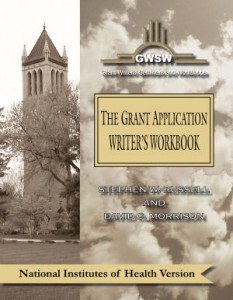Part 8: Dangerous Words to Avoid in Grant Proposals
In a series of blogs over the past year we have discussed a number of errors that many novice (and sometimes experienced) proposal writers make in the preparation of their grant proposals. Each of these blogs have been predicated upon the argument that it is critically important that every applicant write exactly what they mean and mean exactly what they write. Although simple in concept, this is not so easy to accomplish in reality, in spite of the best intentions of most applicants. Today we would like to discuss the concept of what those of us in our organization term “Glittering Generalities”. In this respect, it is surprising how easy it is to fall into the trap of promising to do certain things in the grant proposal that, upon serious reflection, really mean very little that would be of value to a reviewer in evaluating feasibility.
The concept of the use of a glittering generality in language has been recognized for at least several centuries and has been not infrequently used in a variety of fields of endeavor ranging from politics, to advertising, and to, believe it or not, grant applications. (Parenthetically, in all of these formats, the goal is to convince the target audience of a certain position or point of view.) One of the best definitions of a glittering generality can be found on the ThoughtCo website. As defined on this informative website: “A glittering generality is a word (phrase or sentence) that is so vague that everyone agrees on its appropriateness and value—but no one is really sure just what it means.” A more succinct definition was provided by the American poet Ralph Waldo Emerson, who quipped “Glittering generalities”! They are blazing ubiquities.'” We can assure you that reviewers of your grant application are not likely to be overly impressed by the applicant who frequents his or her grant proposal with blazing ubiquities!
So, what exactly is a glittering generality and how is it misused by applicants (who are attempting to make a convincing case for a particular point of view)? Consider the example of the applicant who is interested in establishing an educational curriculum for elementary school children in order to familiarize them with the fundamental concepts of computer technology. Given that the application format is relatively restricted in number of pages for presentation of the idea, and wanting to be conscientious, the applicant might indicate that the strategy will be to: “…use selected modern instructional approaches as indicated by the latest early education literature coupled with current evidence-based technology instruction.“ While, on the surface, this plan sounds quite reasonable, the reviewer is almost certain to remain confused as to what the instructional approaches will actually be. This, in turn, will be highly likely to prevent an assessment of feasibility of the planned studies which will preclude a recommendation for a fundable score.
As another example, consider the applicant who is preparing a grant application to determine the extent of po-tential bias in the various communications media, comparing radio, television, newspapers and social blog sites. Clearly there is an extensive data collection that the applicant will need to analyze. Recognizing this, the applicant promises that: “…findings will be analyzed using all appropriate techniques based upon data collected from a wide variety of independent sources”. I think it should be relatively obvious to any reader of this blog that this promise is sufficiently vague such that every reviewer will agree on its appropriateness and value but no one can be absolutely certain just what it means.
While the above examples represent two illustrations of the concept of glittering generalities extrapolated pretty much to the extreme, we can assure you that it is highly likely that at least one example can be found in almost any 12- or 15-page grant application. While an applicant is likely to not be overly criticized for inclusion of a very infrequent glittering generality, the adoption of such an approach as a general practice in the place of providing detailed information is never going to be in an applicant’s best interest. The best way to avoid the use of glittering generalities is to be certain to always provide adequate details so that a reviewer will be able to explain to colleagues the plan of the applicant (or at least a well-described citation of a published work, but not multiple published works) in which the appropriate detail is provided. Applicants should remember that, of the five review criteria normally used in the evaluation of grant proposals (Significance, Investigators, Approach, Environment, Innovation or Transformative Potential), it is usually the Approach section that receives the greatest degree of scrutiny from reviewers. This is one place in particular where glittering generalities, therefore, have no place!

